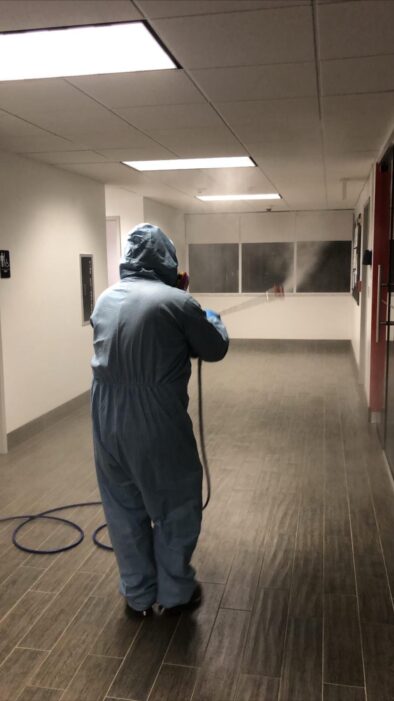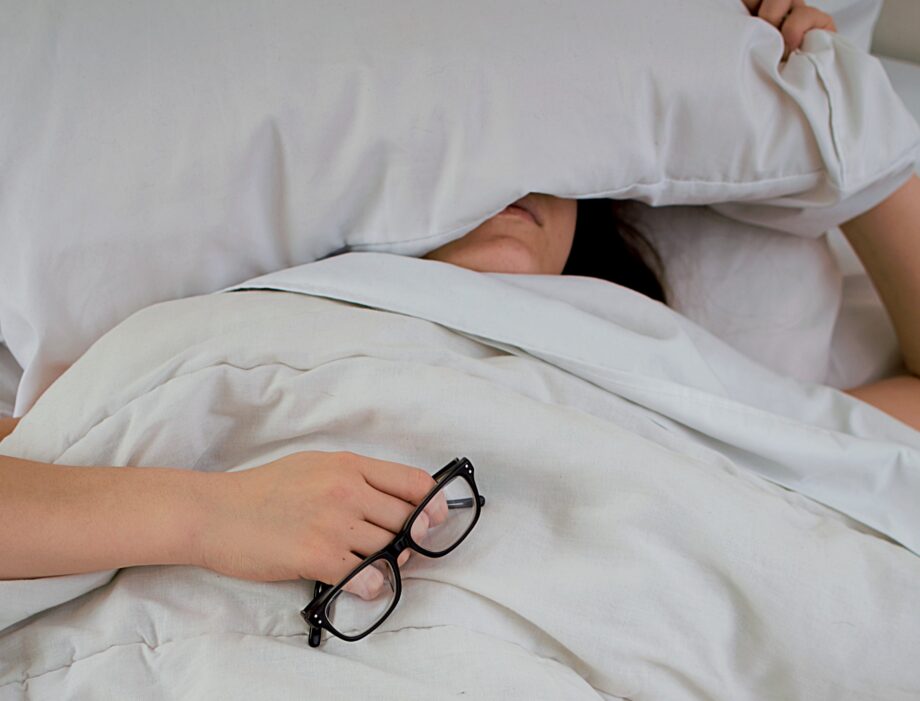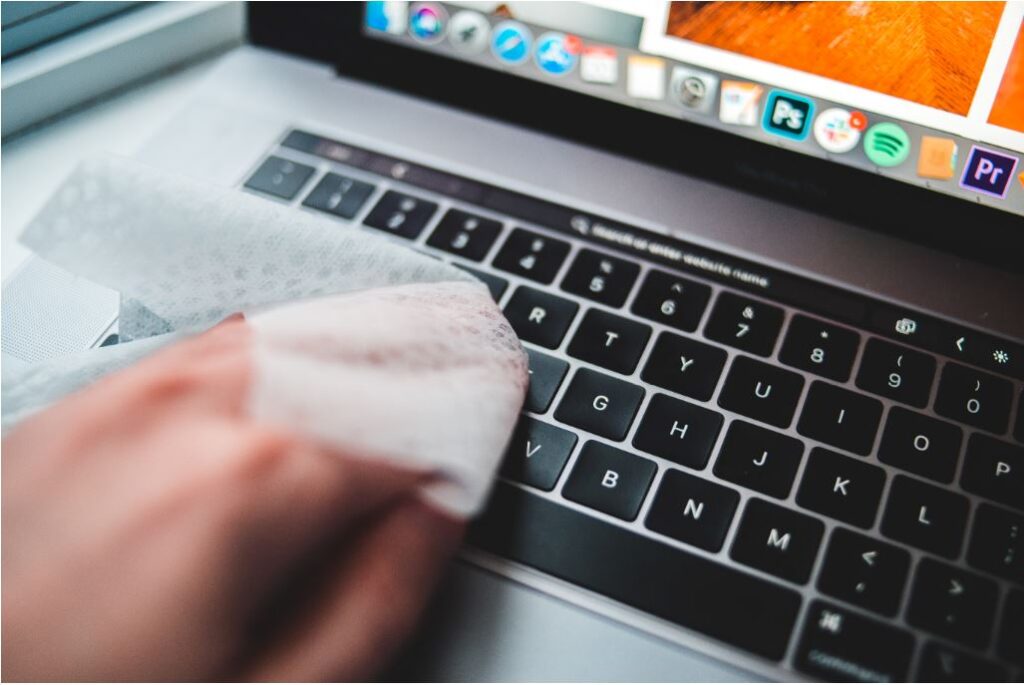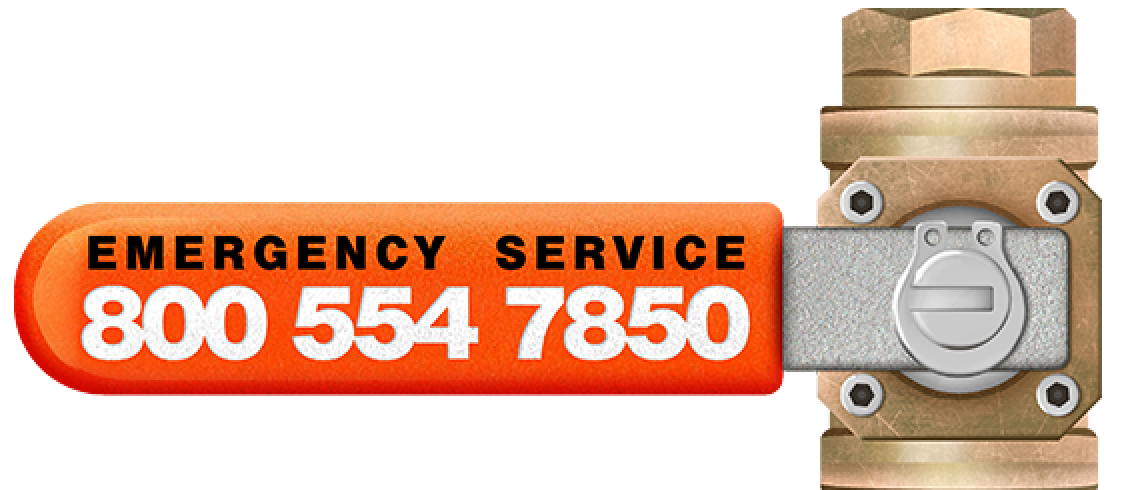Notwithstanding the fast-spreading novel coronavirus COVID-19, and notwithstanding the recommendations about social distancing, there will come a time to return to work. When that time comes, there is still the need to be thoughtful about the spread of the SARS-CoV-2 virus. (SARS-CoV-2 being the virus that causes the respiratory disease COVID-19.)
Some people are still working and some will return to work while the social distancing practice is the standard. Whenever you return to work, things will, or should, be a little different from how they were just a few short weeks ago. Care should be given to return to a decontaminated workplace and to take care to limit the spread of COVID-19 and other sicknesses going forward.

Applying Disinfectant In Your Place of Business
There is an effective way and a not so effective way to apply disinfectant to your office, warehouse, school, church, store, or other buildings. We at Construemax are experts in decontamination, cleaning property in hazardous situations. We have the proper Personal Protection Equipment (PPE) for our employees to wear, and we engage appropriate protocols to contain hazardous materials. When we decontaminate your property we use a two-step process to clean and then deploy disinfectant those areas exposed to the contaminant.
When you return to your place of business to resume working, there are some things you will need to do to maintain a clean environment. The area will remain decontaminated forever if the contaminant is never brought back into the workspace. But the way this virus works, it’s hard to know if it is there.
The Virus On Surfaces at Your Business
While the spread of COVID-19 has been attributed to “respiratory droplets”, it has been observed that the SARS-CoV-2 virus can also live on surfaces like desks, doorknobs, phones, and everything else a person might touch. How long the virus remains alive on these surfaces is unknown, but studies have found that it can live as short as 4 hours with some materials, in this case, copper; but as long as 17 days on other surfaces. This 17-day result was observed on a cruise ship where the cabin had been vacant for 17 days and the virus was discovered.
There is the concern that, like other diseases, if a person touches an object that has the virus on it, they will pick it up and transfer that virus to other places. It is harmless to you until it enters the body through your mouth, nose, or eyes. So while it may do you no harm on the doorknob or on your hand, when you touch your face the virus can then transfer and infect you.
Incubation Period Makes Re-contamination Easier
The time it takes for the virus to start making you experience sickness and feel the symptoms, such as fever, cough, headaches, and shortness of breath, has been reported to be as short as 1 day or as long as 14 days, most commonly it seems to be around 5 days. There has been anecdotal evidence that some have taken as long as 28 days, but these are unverified. This all indicates that it is very possible for a worker to be infected and completely unaware of it for days. If that worker is coming to work with no symptoms, they could be spreading the virus to the surfaces they touch.
What To Do After Decontamination
After your business has been decontaminated and workers return to work the property is again open to risk. The risk that workers could bring the virus back. Since it has been determined that it’s time to return to work, this risk has been assessed and deemed as one that needs to be had. The goal now is to limit, as much as possible, re-contamination.
The recommendation to mitigate exposure to workers is to continue following the existing recommendations from the Centers for Disease Control (CDC) that they have been giving to everyone and then to take a few extra steps in your office.
Reviewing Existing Recommendations
Social Distancing
Currently, the CDC is recommending the practice of social distancing. This is based on their observation that COVID-19 appears to be spread “Through respiratory droplets produced when an infected person coughs or sneezes.” They have stated that six feet of separation between an infected person and an uninfected person should be sufficient to avoid spreading the virus to the uninfected person this way.
Stay Clean
In addition to social distancing, the CDC recommends that you wash your hands regularly with soap and water, and to do so thoroughly for at least 20 seconds. Where soap and water are not available, hand sanitizer with at least 60% alcohol. Additionally, it is recommended that people avoid touching their face unless they have just washed their hands.
Again, the SARS-CoV-2 can also live on surfaces like desks, doorknobs, phones, and everything else a person might touch. As such, to avoid possibly spreading the virus this way, all commonly touched surfaces should be cleaned with a disinfectant regularly
Stay Home if You Are Sick

This has long been a policy for many companies, but with the fast-spreading nature of this virus, it has become especially recommended, even for those workers who are providing necessary services to the community.
On the one hand, you may well be sick with something that is not COVID-19 and not terribly contagious. But on the other hand, it could be.
Staying home initially is intended to slow the spread of this disease. As companies reopen and people return to work, the imperative to stay home when sick is to prevent a new outbreak and allow the sick individual the best environment to recover.
There are promising results from a variety of treatment methods and with luck, a cure or effective treatment will be found quickly. In the meantime, the recommendation is to stay at home when you are sick.
Additional Recommendations
Expanding Social Distancing
Some things an employer can do to limit contact can include:
- Allow employees to work from home when it is feasible.
- Implement flexible work hours where possible such as staggered shifts.
- Where possible, separate employees, perhaps using partitions if physical proximity can’t be increased.
- Discourage customary physical contact such as handshakes and hugs.
- Cancel unnecessary meetings and hold video conferencing or telephone meetings for important meetings.
- If meetings can’t be held electronically, hold them in a large and well-ventilated space, maintaining distance.
- Limit interaction with the public by delivering services using technologies including the phone, video, or web, and provide curbside pick-up, and delivery.
- Where necessary, furlough workers until circumstances allow normal social interactions again.
In this era of ubiquitous technology, there are many tools that can be employed effectively to continue business operations while still following the CDC guidelines on social contact. Nearly everyone has unlimited phone calling, including long distance. Internet access is in nearly every home, allowing for workers to get things done even living on another continent. Video conferencing tools abound and many offer services for free for a limited conference or trial period. Consider exploring these options.
Cleaning Up After Yourself

Employers (and parents) have struggled forever to get people to simply clean up after themselves. Some things that can be implemented in the workplace to limit the spread of COVID-19 include:
- Rather than having coworkers share tools, dedicate tools and phones to one person.
- When shared desks or computers are required from one shift to the next, use disinfectant to clean them before using them and again when finished using them (the double disinfection process acts as a protection against forgetfulness).
- Use disposable cleaning supplies regularly with to disinfect tools and commonly touched surfaces such as door handles.
- Leave light switches on throughout work hours with one person assigned to flip the switches, and then clean them daily.
- Provide tissues, paper towels, trash cans that don’t require touching, soap, and hand sanitizer.
- Reinforce coughing and sneezing into a shirt sleeve or tissue.
- If a worker has tested positive for COVID-19 since returning to work, contact Construemax to decontaminate the property again.
Stay At Home When Anyone In a Household of a Worker is Sick
Because the aim of these severe measures is to prevent the spread of COVID-19, it is important that if a worker is sick, they stay home. But other standards should apply as well for when workers should stay home in these extraordinary times. Infection prevention actions might include:
- If the worker has COVID-19, or suspected to have it, they should stay home.
- If the worker is exposed to anyone with COVID-19, they should stay home.
- If someone in their household is sick or exhibiting symptoms, they should stay home.
- If a worker starts exhibiting symptoms during their shift, they should be sent home or isolated until they are able to head home. Such isolation should be in a closed room where the door can be closed.
- Encourage the use of any company policies or benefits such as sick leave, vacation time, or employee assistance programs.
- Allow for the sharing or gifting of sick leave to others who may need it.
Again, if any workers have contact with someone with COVID-19 or they themselves have it, and they have been to the workplace, it should be decontaminated again.
These are trying times and nobody expects a pandemic and the need to decontaminate their workplace. But the unexpected has happened. Relax. Trust Construemax.







